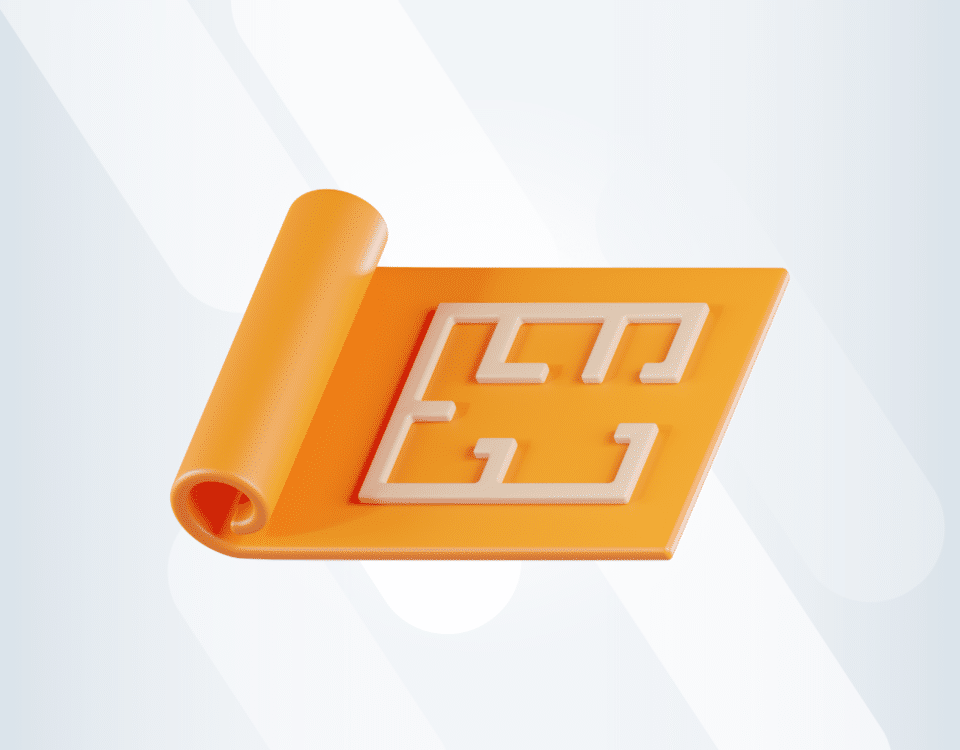Construction Tips, News & Best Practices
Technology Adoption:
Top 5 Tech Trends That Shape The Future of The Construction Industry
The Covid-19 crisis has made it painfully clear - the construction industry has to adopt new technologies in order to thrive. Digitalisation is the future of the construction industry and it’s time to get familiar with it. Let us guide you through 5 tech trends that will have the biggest impact on the sector in upcoming years!
For some years now, individuals in construction have voiced concerns that the sector is lagging behind in terms of digitalisation and the use of new technologies. Many articles were written (including ours) about the benefits of adopting new technologies and why construction companies should do so despite hesitations.
Then Covid-19 happened, and one of its consequences for the construction industry is that it demonstrated how technology could support both business continuity and remote project execution.
The necessity to switch to remote work almost overnight accelerated tech adoption in the construction industry enormously. Companies saw that implementing new technologies into their workflows helped them survive and actually increased efficiency.
Hopefully, some good may come out of the coronavirus crisis for construction in its broader appreciation of new technologies and willingness to adopt innovative solutions. This will help to deliver projects faster and easier and enable work to be more efficient, safer, and more sustainable.
To keep you up to date, we present 5 tech trends that will shape the construction industry's future!
- 01
Virtual Reality and Augmented Reality
VR is a technology that immerses us entirely in the digital world, while AR adds digital elements to our live view. The benefits of using digital reality in construction are endless.
You can improve understanding of complex projects to both your team and your client from the beginning so that it is easier to avoid significant and expensive changes after work has started. It can enhance collaboration between teams, who can work on the project together from wherever they are.
It also enables real-time feedback: with a fast and precise simulation of changes made to the project, you can quickly know if it's the right solution or if something should be improved in terms of both design and risk assessment.
Beyond that, AR/VR technology has massive potential for equipment operator and safety training, with workers getting exposure to hazardous situations in a safe and controlled environment. - 02
3D Printing
3D printing has the potential to change construction processes totally. For one, 3D printing makes it easy to create project models that show how the project would look finished and can help implement changes quickly.
However, the usage of 3D printing in construction goes far beyond that – the technology can be used to complete full-scale projects! Materials can be prefabricated using 3D printing and transported to the site ready to use.
It is even possible to print parts and components right on-site, reducing waste and saving transportation, storage costs, and carbon emissions. It allows for the fast delivery of materials and reduces additional steps in the process, making project delivery quicker and more efficient. - 03
BIM
The other key innovation for the sector's growth is BIM use (Building Information Modelling). This helps prepare a digitised construction project, using all the information needed during project delivery, including design, budget, and schedule for a full view of the project.
It allows us to catch any problems ahead of time, maximises time and money spent, and improves communication and planning. It can also reduce costs and risks as businesses using this technology often see a high return on investment. - 04
Robots and Drones
Robots are mainly used to execute automated, repetitive tasks, which they can do quickly and safely. They are used in activities like bricklaying, painting and loading, with this range probably expanding in the future. The use of robots protects workers from dangerous environments and can be necessary to complete work during labour shortages.Among all the robots used in construction, the most often used are drones. They have made surveying large construction sites easy and quick. Drones can locate potential hazards, track progress, and plan and execute challenging aspects of projects. They can also deliver materials to the site, reducing the number of vehicles needed.
If you want to learn more about robots' use in construction, check out our articles about drones and robotic swarms!
- 05
Artificial Intelligence
Does it sound like sci-fi? The construction industry is already implementing AI and Machine Learning (ML) to work on projects and construction sites, and its use will only increase in significance. Construction can use AI and ML for:Creating "digital twins" of buildings, considering many more factors than would be possible for a human.
Better project design – it can explore different versions of a solution and check its compatibility with other elements.
AI-driven automation for repetitive tasks.
Better financial planning and management.
Safety and efficiency of job-site work.
Artificial intelligence is one of the most fascinating new technologies to transform construction reality around the world. That's why we are putting together an AI Whitepaper for all of you who would like to know more about the possibilities it brings. Stay tuned!
Many of these technologies had been in development for quite some time, and the pandemic is accelerating their widespread implementation. Companies now functioning in the "new normal" must continue to be deliberate and thoughtful while choosing new technologies to help them thrive and increase their productivity.
With everything moving "online", it becomes crucial to ensure the data security of any new technology we want to add to our workflow Learn how Archdesk deals with data security!
With all these technological developments, who knows what the construction industry will look like in 10 or 20 years. However, one thing is sure – it is an exciting time to be in the industry!
You might also like
February 29, 2024 • 7 min read
Utilizing the human-first approach to construction projects to drive higher results.
July 3, 2023 • 6 min read
8 Best Construction Drawing Management Software (2023): A Comprehensive Guide
Find all the information you need about the construction drawing management software tools available on ...June 14, 2023 • 6 min read
The 11 Best PlanGrid Alternatives (2023)
Looking for a great alternative to PlanGrid software? Check out the 11 best construction software tools ...June 14, 2023 • 4 min read
How to win at CIS 340 and make taxes a breeze
CIS 340 is a legal obligation for contractors. But getting it right isn’t straightforward. Want ...





